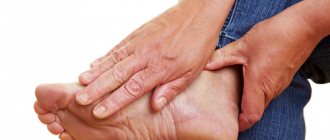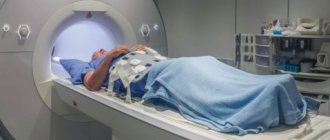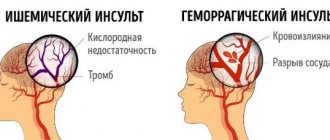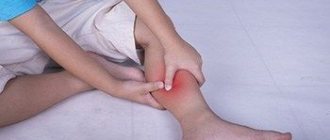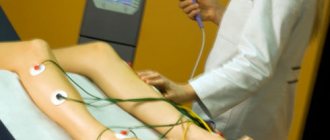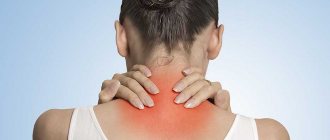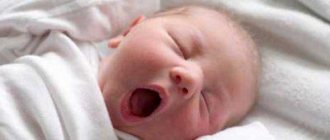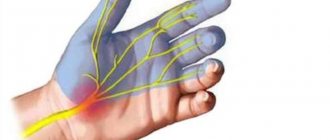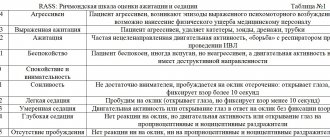Stroke is a serious disease in which many functions of the body are affected. In case of acute disruption of the blood supply to the brain, some of the cells responsible for certain actions in the body die.
After suffering from this disease, speech and motor functions suffer the most. This article will help answer many questions related to the restoration of the patient’s musculoskeletal system.
In order to understand how complete recovery is possible, you need to pay attention to factors such as:
- previous form of stroke;
- area of brain damage;
- age and general condition of the patient before the stroke;
- completeness and timeliness of medical care to the victim.
In any case, the rehabilitation process is a long-term and difficult period that requires maximum effort and dedication.
Causes of damage to the central nervous system
Complete loss of movements or their weakening are caused by paralysis and paresis. In such cases, there are several types of dysfunction of the muscles of the limbs:
- tetraplegia (impaired functioning of all limbs);
- monoplegia (impaired functioning of only one limb);
- paraplegia (impaired mobility of the upper or lower extremities);
- hemiplegia (lack of strength in the muscles of the limbs located on the left or right side of the body).
Among the main causes of disruption of the central nervous system, experts indicate:
- brain or spinal cord injuries (bruises, concussions, compression);
- stroke;
- injury or pathology of nerve trunks;
- severe poisoning of the body;
- tumor processes in the brain or its membranes;
- metabolic disorder;
- infections affecting nerve cells;
- severe and frequent stress.
Regardless of whether motor activity has been partially or completely impaired, movements of the upper extremities are much more difficult to fully restore than those of the lower extremities, because fine motor skills are very important for the hands.
How many legs?
There are two main types of walking canes - regular and multi-legged (equipped with three or four legs at the bottom).
An ordinary cane will provide greater mobility, but a multi-supported cane will provide greater stability. Models with several points of support are needed if there are problems with the vestibular system, for example after a stroke: if you have difficulty maintaining balance, you often feel dizzy, it is better to choose a cane with increased stability. In addition, such canes are necessary for people who are very overweight, as well as if there is severe ice outside. In all other cases, you can get by with a regular cane.
Questions and Answers What does the white cane symbolize?
Methods for restoring motor functions of the upper and lower extremities
Restoration of motor functions of the upper and lower extremities, according to specialists at the OSTEOPOLYCLINIC medical center, must begin immediately after the patient’s condition improves. The rehabilitation period may be delayed or may not bring any positive results at all if manipulations are not started immediately after it becomes possible to move the limbs.
Even if the patient has difficulty moving his limbs independently, his closest relatives or a physician invited for this can help him. Massaging immobilized limbs is not as difficult as performing passive gymnastics.
Sometimes depression caused by the very fact of the disease, and the resulting helpless state, lead to patients consciously refusing rehabilitation methods. However, this condition of the patient is often caused by damage to certain areas of the brain.
Restoring the functions of the musculoskeletal system largely depends on the caring attitude of those around the patient and their delicate approach to the problem. An incentive to overcome the consequences of the disease can be not only reminders of a previous healthy life, but also examples from the lives of patients who suffered a similar disease and successfully coped with the restoration of motor functions of the upper and lower extremities.
Devices and simulators
The main devices to help restore walking are walkers, canes, crutches and any other available means that have handrails that you can lean on while moving.
To restore walking, special exercise machines have also been created that allow you to quickly get in shape, namely:
- expander for legs;
- exercise bike - at first used with an automatic motor, which allows you to make movements in the absence of muscle movements; then replaced with a regular one with fixed pedals;
- stepper and step platform - a pedal exerciser for the legs with a handle for body support;
- treadmill – it is advisable to use a special treadmill with additional handrails and supports;
- Shagogon 409 – often used in medical centers; imitates walking in the complete absence of motor ability.
The main rehabilitation methods that have proven themselves over time are:
- electrical stimulation;
- therapeutic and preventive physical education;
- biofeedback method.
- Anat Baniel method (ABM therapy) based on the Moshe Feldenkrais method.
Regardless of which rehabilitation method the specialist considers most effective in most cases, it must be based on the individual factors of the patient’s disease. In particular, the doctor must take into account the severity of the patient’s illness, his general physical and mental condition, and his emotional mood for rehabilitation.
However, some methods apply to all patients without exception:
- Exercise therapy and massage;
- psychological stimulation;
- exercises to restore memory and speech;
- preventive measures aimed at preventing recurrent disease and complications.
Restoring the functions of movement of the arms and legs cannot be associated only with physical actions. It is necessary to explain to the patient that much depends on his volitional orders to his body. When performing the simplest exercises, it is necessary to mentally pronounce (or out loud, if speech is restored) the movements of the limb, give it orders, and stimulate the brain to carry them out.
How to use a cane correctly
- Hold the cane in the hand opposite your sore leg. If you are using the stick only for balance, it should be held in your “dominant” hand: if you are right-handed - in the right, if you are left-handed - in the left.
- Start walking, taking a step with your affected leg and at the same time pointing your cane forward. Then shift your weight onto the cane and take a step with your good leg.
- When going up the stairs, take a step up with your healthy leg. Then place your cane and your affected leg on the top step. Be sure to hold on to the railing. If necessary, switch the stick to your other hand.
- As you go down, place the cane on the bottom step, then take a step with your bad leg, followed by your good leg.
Some basic rules for performing physical therapy
The objectives of kinesiotherapy (physical therapy) include returning physical strength to the muscles of the limbs, if possible, all previously performed movements, as well as the patient’s ability to move and perform standard everyday activities.
When performing exercises to restore limb function, you should follow a few simple rules.
- To activate the affected areas of the brain and activate reserve nerve cells, you should start any exercise with healthy limbs. In this case, it is necessary to warn the patient that he should try to perform the exercises with an immobilized hand as if he were doing it himself (this applies to passive gymnastics). Every simple movement must be voiced by a relative or physician helping the person. So, if you need to raise your hand, the health worker should first warn the patient: “Now I will raise your hand, and you will help me with this. Let's start: raise your hand, once! We lower our hand - two!” Counting during exercises helps you concentrate and tense your muscles to the limit for the jerk.
- The greatest concentration of attention is achieved with closed eyes. This way the patient will not be distracted by extraneous little things that are visible to him. This is even more important if there are strangers in the room.
- It is quite difficult for the patient to concentrate, given the affected areas of the brain. However, you should not give in to slack: day after day, the exercises should be made more difficult or at least replaced with ones that are similar in simplicity, even if no visible results were achieved. Instead of just raising your hands, you can put them on your stomach or reach your ear (nose).
- Since the end result should be the execution of everyday activities, it is necessary to help the patient's brain remember how they are performed. Any everyday items are suitable for this - napkins, toothbrushes, spoons, etc. Imitating simple movements previously performed daily stimulates brain cells. For example, you can do the following exercise: bring a napkin to your lips and wipe them. Of course, the muscles on the paralyzed upper limb are too weak for the patient to feel how he wets his lips with a napkin. To do this, when performing passive gymnastics, you need to lightly press the napkin to your lips so that the person clearly feels the touch.
- From simple exercises you need to gradually move on to complex ones. The patient will not be able to immediately perform a set of movements, so they must first be “broken down” into simple ones. Then you need to gradually increase the score. That is, from “one-two” to “one-two-three-four” (raised your hands - put them on your stomach - raised them again - lowered them) - and thus bring the actions to 16 exercises in a row, without stopping.
With the help of physical therapy and abm therapy sessions, a person learns again, like a baby, ordinary everyday activities and the ability to self-care. The need to eat, wash, and dress independently is natural for a healthy person; he performs all these actions without even thinking. Performing physical therapy exercises with the help of the instructor’s muscular strength, the patient first restores blood circulation in the muscles, develops joints, and only then begins to move independently.
You need to understand that even after the patient begins to sit up on the bed independently and then walk, his muscles at first will still be too weak for him to move with confidence. Therefore, it is necessary to equip the room with special handrails for patients, which they can hold on to, especially such handles are needed in the toilet and bathroom.
Products for the care of stroke patients
Additional tools will help facilitate the care of stroke patients who are bedridden or have limited mobility:
- crutches – facilitate the movement of a sedentary person, help to gain support and restore walking skills;
- rehabilitation suit - special clothing that maintains the correct position of the body and limbs, stimulates the transmission of impulses from the brain to the muscles, and enhances the reaction of the motor-neural system;
- bandage-fixator - a fixation bandage that holds the paralyzed arm in a half-bent position, while controlling its position and preventing injuries;
- toilet chair - a portable toilet with a removable container for excrement;
- seat, bath rails - items that are fixed to the bath to facilitate water procedures;
- additional hygiene products : adult diapers, absorbent linens, diapers and sheets, body cleansers and moisturizers, etc.
Electrical stimulation method
Electrical stimulation is the application of low-frequency pulsed electrical current to tissue to stimulate motor activity in paralyzed muscles. This method accelerates blood flow in the muscles, improves metabolic and trophic processes, and increases contractility.
Since electrical stimulation most often uses cutaneous placement of electrodes, there is no irritation or tissue destruction. The patient does not experience any negative feelings. On the contrary, for patients whose rehabilitation period has been prolonged, this method can significantly speed it up.
This method is an additional means of restoring motor functions of the limbs to physical therapy, but in no case is it an alternative. There are cases when electrical stimulation cannot be avoided, but only a doctor should decide whether its use is necessary. It is he who selects the required current strength, installs electrodes in the right places, based on the degree of muscle damage and the patient’s condition.
The history of Nordic walking
Nordic walking was officially approved in 1979 in Finland. The concept of the classes was developed by Mauri Rapo based on the off-season training of skiers. At first, ordinary ski poles were used, in 1988 special ones were developed, and in 1997 Exel improved them. At the same time, walking with poles became an independent sport, and in 2000 the International Nordic Walking Association was created, which, together with Finland, included Germany and Austria. The headquarters of the organization was in the Finnish city of Vantaa.
Currently, more than 20 countries are members of the association. In addition, instructors conduct training in another 40 countries.
The benefits and harms of Nordic walking
Effects of Nordic walking:
- Normalization of heart rate, improvement of blood circulation;
- Relieving tension and strengthening the muscles of the legs, back and abdomen;
- Following the correct technique helps improve posture;
- Losing weight. As a result of exercise, calorie burning increases by 10-20% and metabolism accelerates.
Harm from Finnish walking occurs only when it is carried out without taking into account contraindications or is performed incorrectly. Such violations of recommendations lead to deterioration of health.
Anat Baniel method - abm therapy (according to the Moshe Feldenkrais method)
ABM therapy (Feldenkrais method) is one of the fastest and most effective methods of rehabilitation. At the moment of injury, our nerve impulses transmit to the brain about damage to some part of the body and we begin to feel pain. The human body is designed in such a way that in order not to experience pain and to protect other systems and the body from further damage and negative consequences, our brain literally “turns off” the damaged area of the body and blocks nerve impulses from it. Thus, the injury site itself loses sensitivity and is provided with minimal mobility. With such severe injuries, the duration of treatment takes a lot of time and months, and our brain simply forgets about these parts of the body. The main task of the ABM therapist in this case is to show the brain that the damaged area is healthy, everything is fine with it and you can confidently use it again, interact with it, and actually restore the mobility of the damaged part of the body.
In addition to the methods described above for restoring motor functions of the limbs, there are many others (for example, drug therapy, swimming pool exercises, exercises in zero gravity, hyperbaric oxygen therapy and others). Each of them has its own advantages and limitations. Only the attending physician of the Clinic of Osteopathy and Classical Medicine should prescribe a specific method in order for the rehabilitation to be as effective as possible and in the shortest possible time.
Frequent mistakes of newbies
In order to achieve maximum effect without fatigue, you need to know how to walk with Nordic poles correctly and what mistakes should be avoided.
Common mistakes made by newbies are:
- Walking with your head down. Pushing the head forward increases stress on the neck, which can cause tension and pain in the neck, shoulders, back and reduce lung capacity.
- Improper holding of poles.
- Incorrect foot movements. Steps without rolling from heel to toe do not provide sufficient exercise to the leg muscles, and this will also lead to rapid fatigue.
- Also, beginners may be in a hurry when starting classes right away. But warming up is a prerequisite before them. It will warm up the muscles and prepare the body for stress.
The most suitable way for beginners to master the Scandinavian sport is to practice with an instructor.

